Giraffe-Sized Python Found in the U.S.—Why They’re Unstoppable
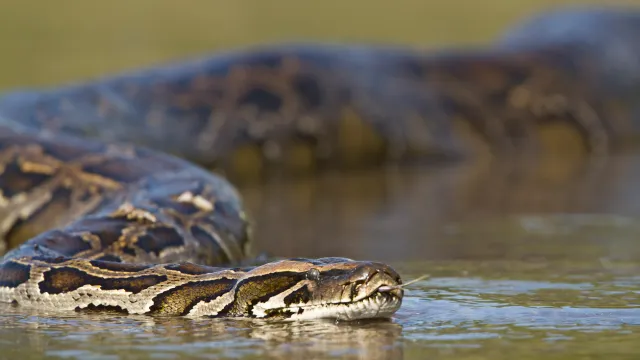
Although they’re not aggressive towards humans, there’s no denying that happening upon a snake unexpectedly can be unsettling, even if you’re not particularly afraid of them. However, it’s an entirely different scenario if the reptile in question happens to be bigger than most people could possibly imagine. Now, a giraffe-sized python found in the U.S. is making headlines—and for more than its record-breaking length. Read on to find out why this invasive species can’t be stopped.
READ THIS NEXT: Venomous Snake Spotted Swimming Across Lake: “This Is a New Fear”.
A Florida man recently captured a record-breaking 19-foot-long Burmese python.
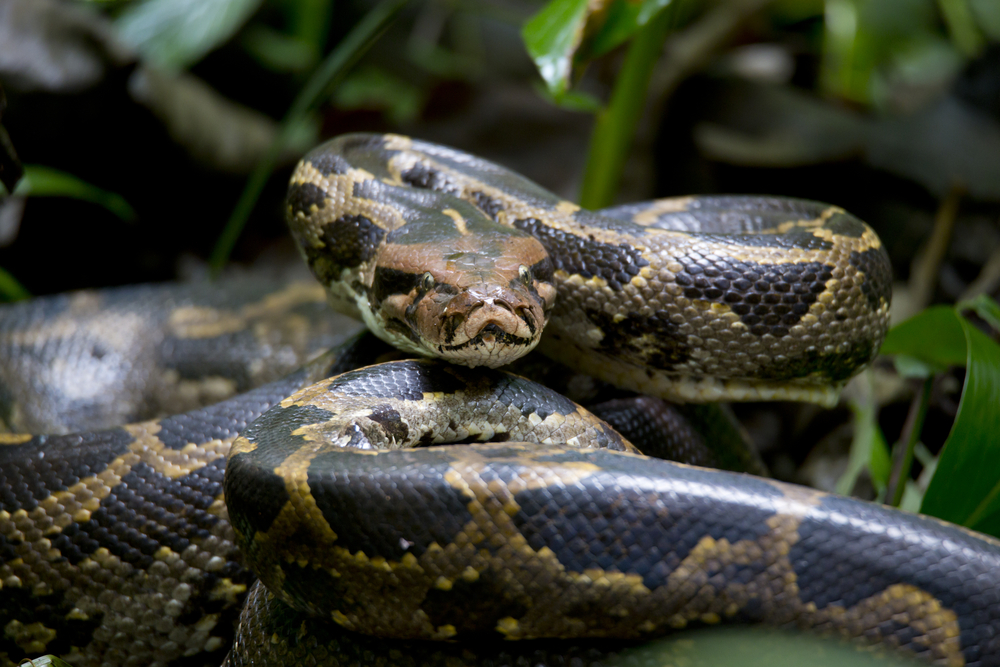
For many, the idea of a giant snake lurking nearby is the stuff of nightmares. But one Florida resident hoping to help his local ecosystem recently took the terrifying scenario head-on, capturing the longest Burmese python ever recorded, NPR reports.
On July 10, python hunter Jake Waleri came across one of the snakes while in Big Cypress National Preserve in Florida. After an initial struggle documented on his Instagram account, he was able to finally wrestle and capture the reptile with the help of other wranglers.
But it wasn’t until the animal was turned over to the Conservancy of Southwest Florida that he discovered it was the largest ever documented, breaking the world record at 19 feet long—as tall as a giraffe’s height—and weighing 125 pounds.
“It’s the only snake I’ve ever seen that scared me enough where I just didn’t know what to do,” Waleri said of the experience in a video released by the Conservancy. “It was a fight, and it was a good one, definitely one to remember.”
The snakes are creating a serious environmental problem as an invasive species.
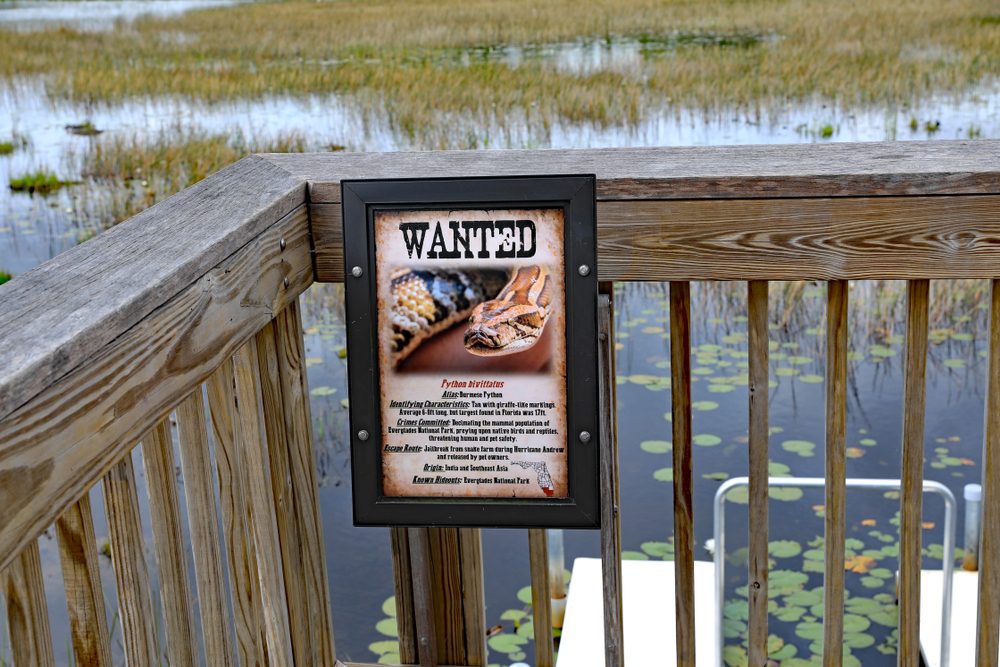
While snakes typically play a vital role in their ecosystems, the Burmese python has been anything but helpful to South Florida. The invasive species has become increasingly problematic since they were first recorded in the wild around the year 2000 after pet owners likely released them and they began reproducing.
According to the U.S. Geological Survey (USGS), the snakes feed on more than 70 types of local mammals in the environmentally sensitive areas in and around the Florida Everglades, The New York Times reported in March. The lack of natural predators has led the state to establish an annual hunt with cash prices in hopes of culling the reptiles and slowing or stopping their ongoing spread, which residents such as Waleri have taken to in recent years.
“It’s awesome to be able to make an impact on South Florida’s environment,” he said in a news release from the Conservancy. “We love this ecosystem and try to preserve it as much as possible.”
Stephen Gauta, a python hunter who accompanied Waleri during his find, agreed that the difficult task was worthwhile. “It’s pretty terrifying to know that these animals are so destructive to our ecosystem. But knowing that we can go out there and take care of monsters like this and get them out of the Everglades is something that makes me feel good,” he said in the video released by the Conservancy.
RELATED: For more up-to-date information, sign up for our daily newsletter.
The catch could help scientists understand the growing problem better.
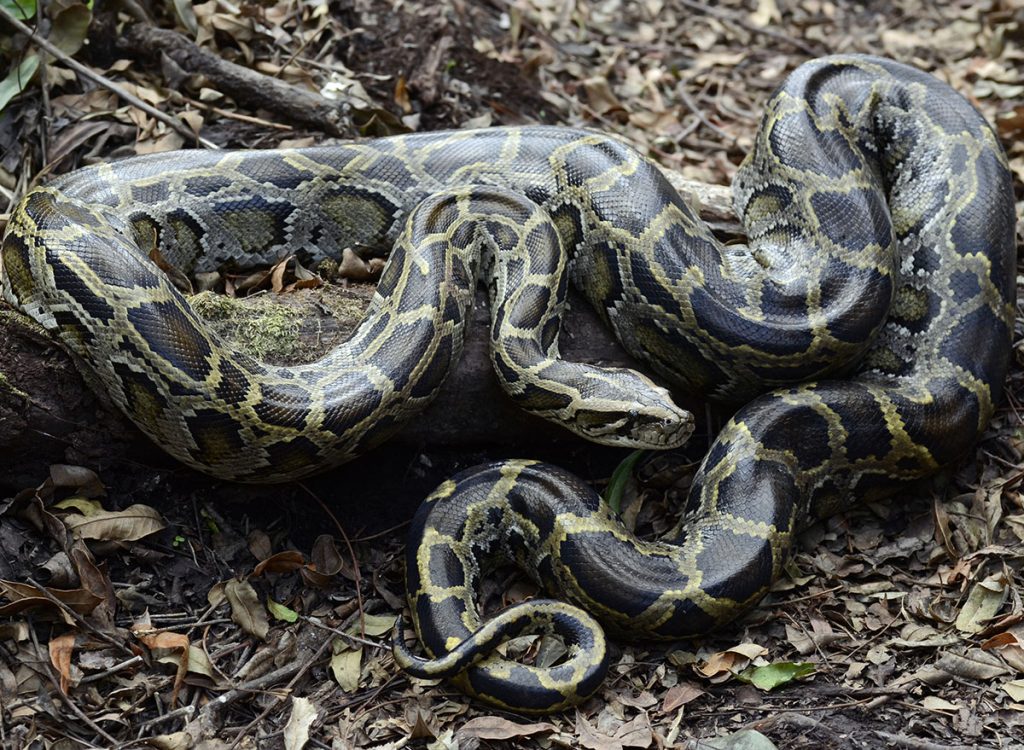
Besides certifying that the reptile was indeed a record-breaking size, Waleri said he knew bringing his catch to the Conservancy could be a way for scientists to help tackle the issue from their end.
“We had a feeling that these snakes get this big, and now we have clear evidence,” Ian Easterling, a biologist with the Conservancy, said in the statement. “Her genetic material may prove valuable for an eventual understanding of the founding population of South Florida.”
And the increasingly large size of the snake isn’t just about bragging rights: It’s also a cause for concern. “They’re getting huge while eating our native wildlife,” Easterling said, per USA Today. “The bonus is that these guys that captured it, they brought it to us for the official measurements, so we’ll be collecting the genetic information and the diet information and other data.”
Experts say the invasive species will be much harder to stop than many realize.
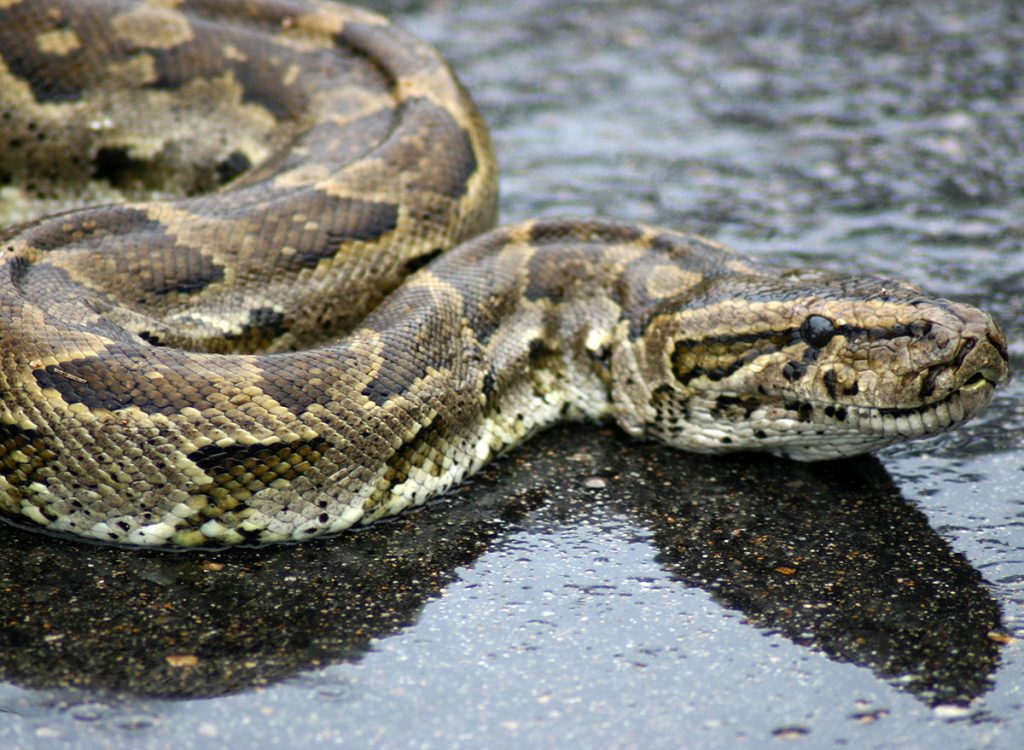
Unfortunately, the issue of invasive snakes will not go away on its own. Just days before the enormous reptile was captured, officials reported another record-breaking find when they removed 111 eggs and the nearly-14-foot-long mother who laid them from the Everglades, marking the largest Burmese python nest ever found in Florida, USA Today reports.
Still, both discoveries highlight just how complex the problem of keeping the reptiles from devastating the ecosystem will likely be. And according to experts, it’s not one that may have a permanent solution.
“I don’t think there is any scenario in which nothing can be done,” Charles van Rees, PhD, conservation scientist and naturalist at the University of Georgia, previously told Best Life. “That being said, all of our solutions are now in a gray area of tradeoffs between how much of Florida’s ecological integrity we want to keep around and how much we’re willing to spend to keep it. Managing invasive species is extremely expensive, and you have to do it forever.”
He added that it’s important to start managing the pythons if they can’t be eradicated outright, especially by focusing on certain areas where wildlife needs to be protected. “The worst case scenario is to do nothing and let things continue as they are,” he warned.